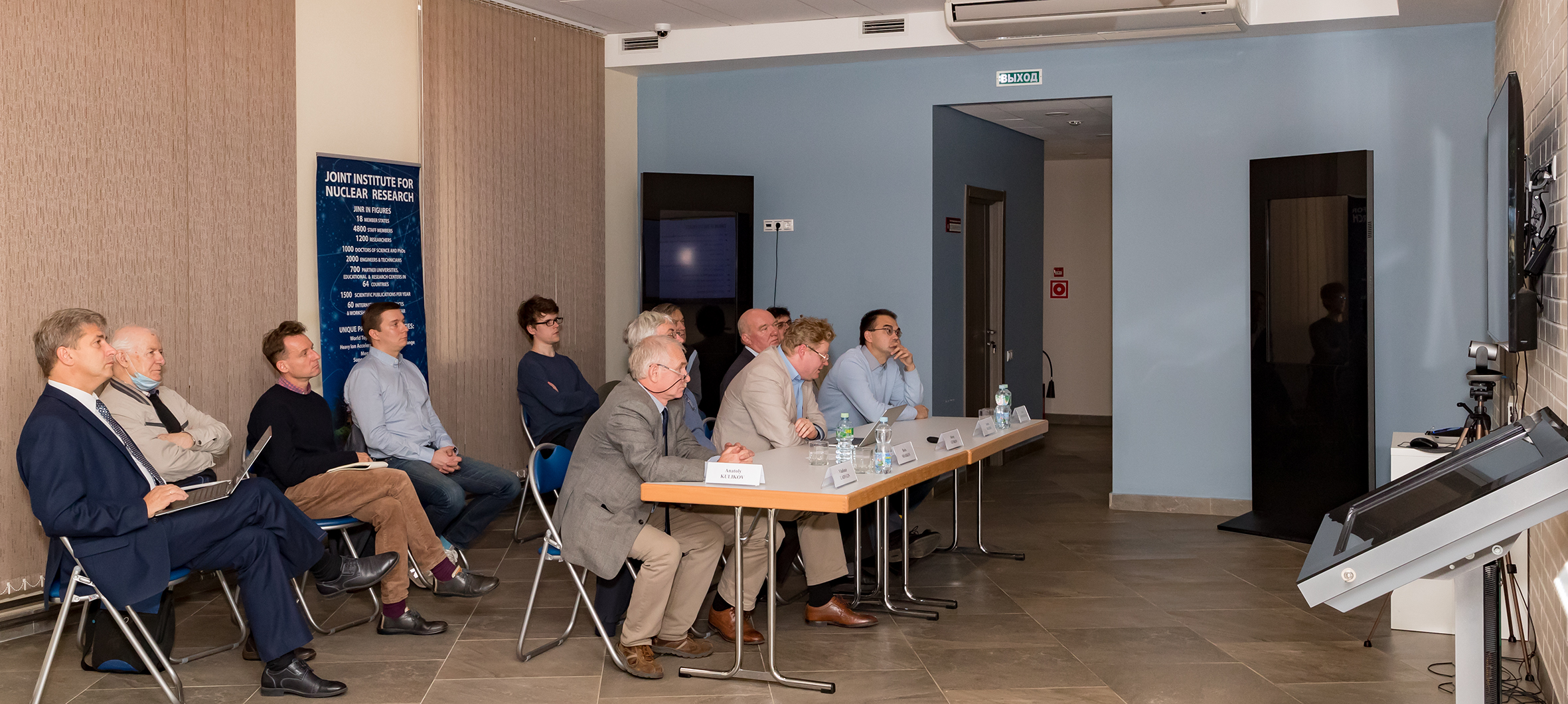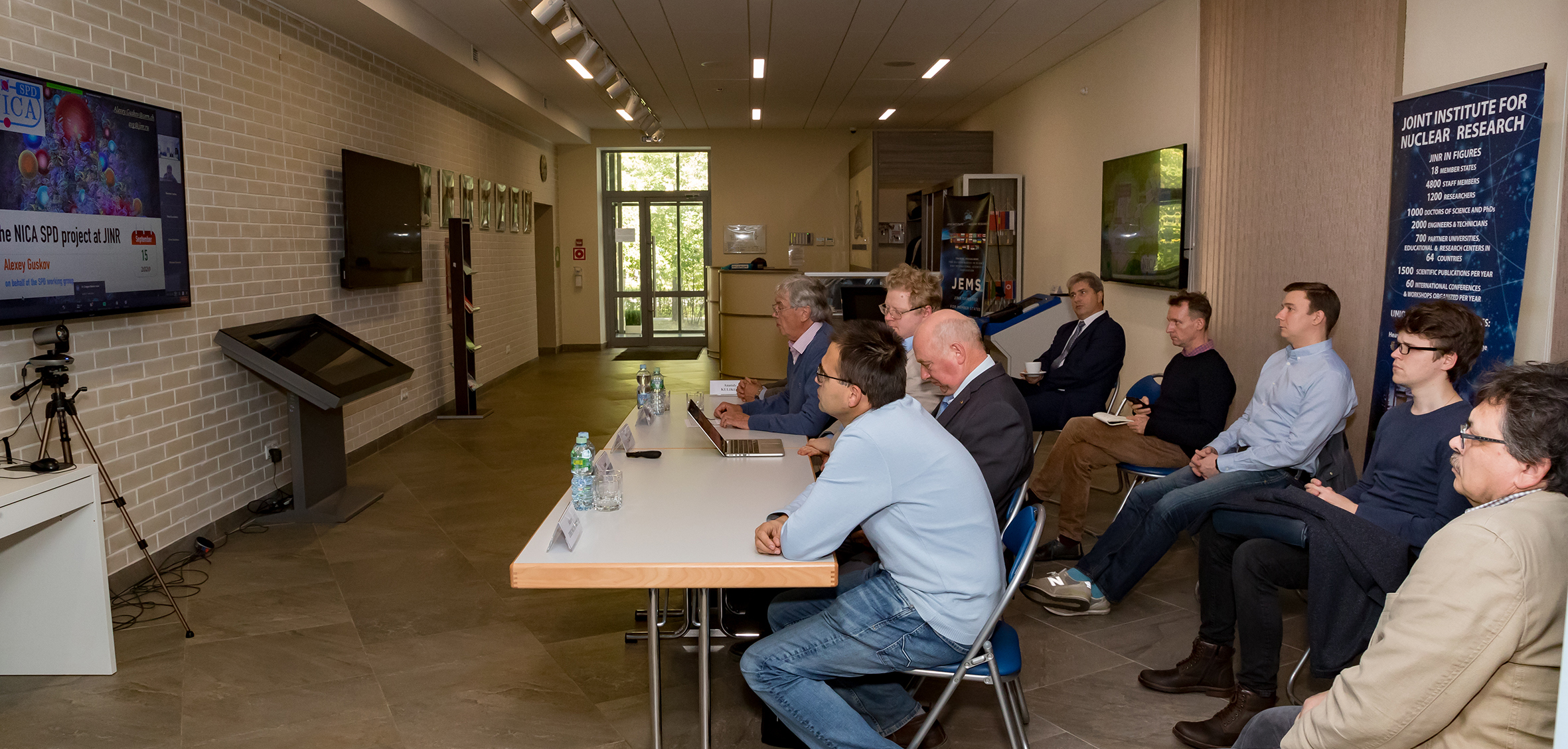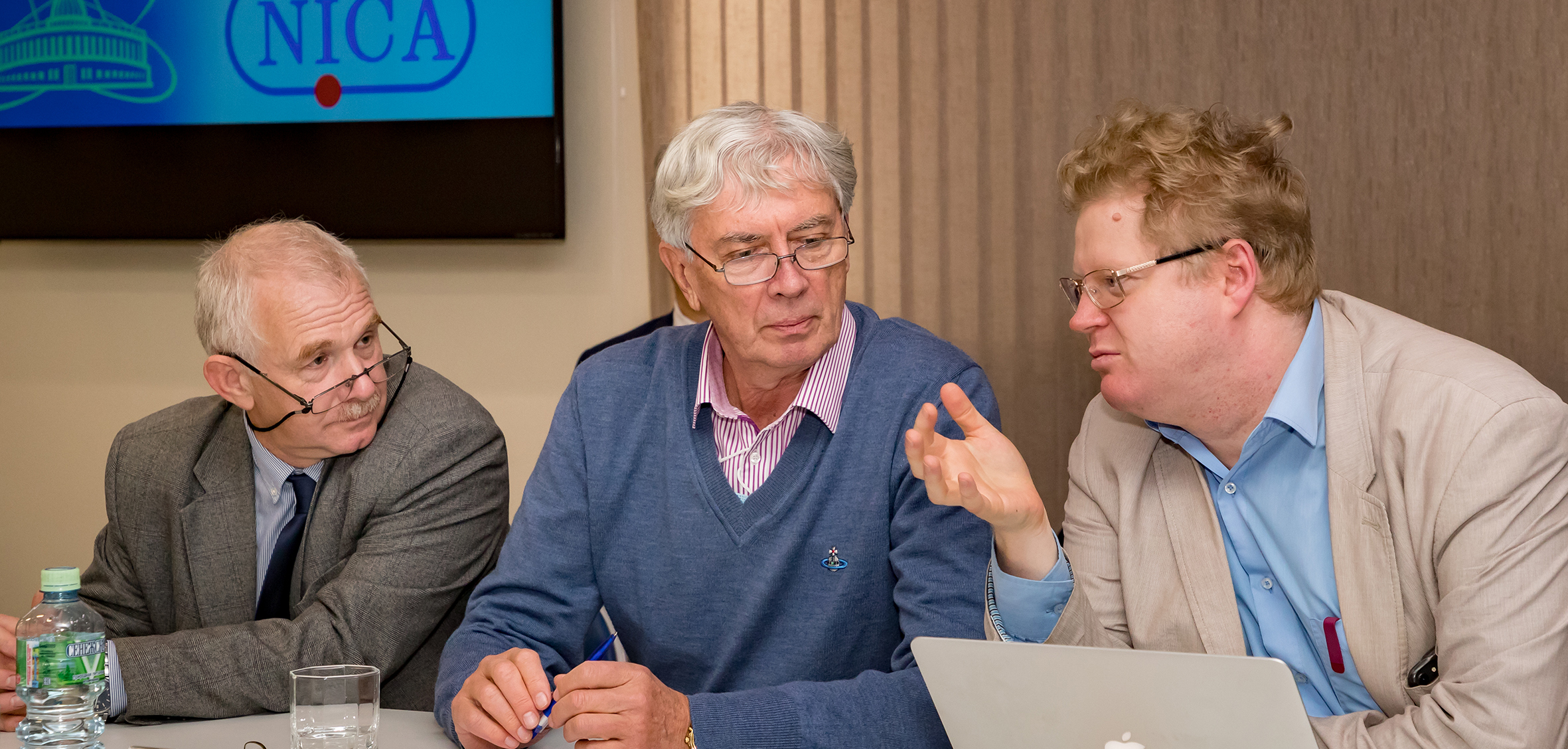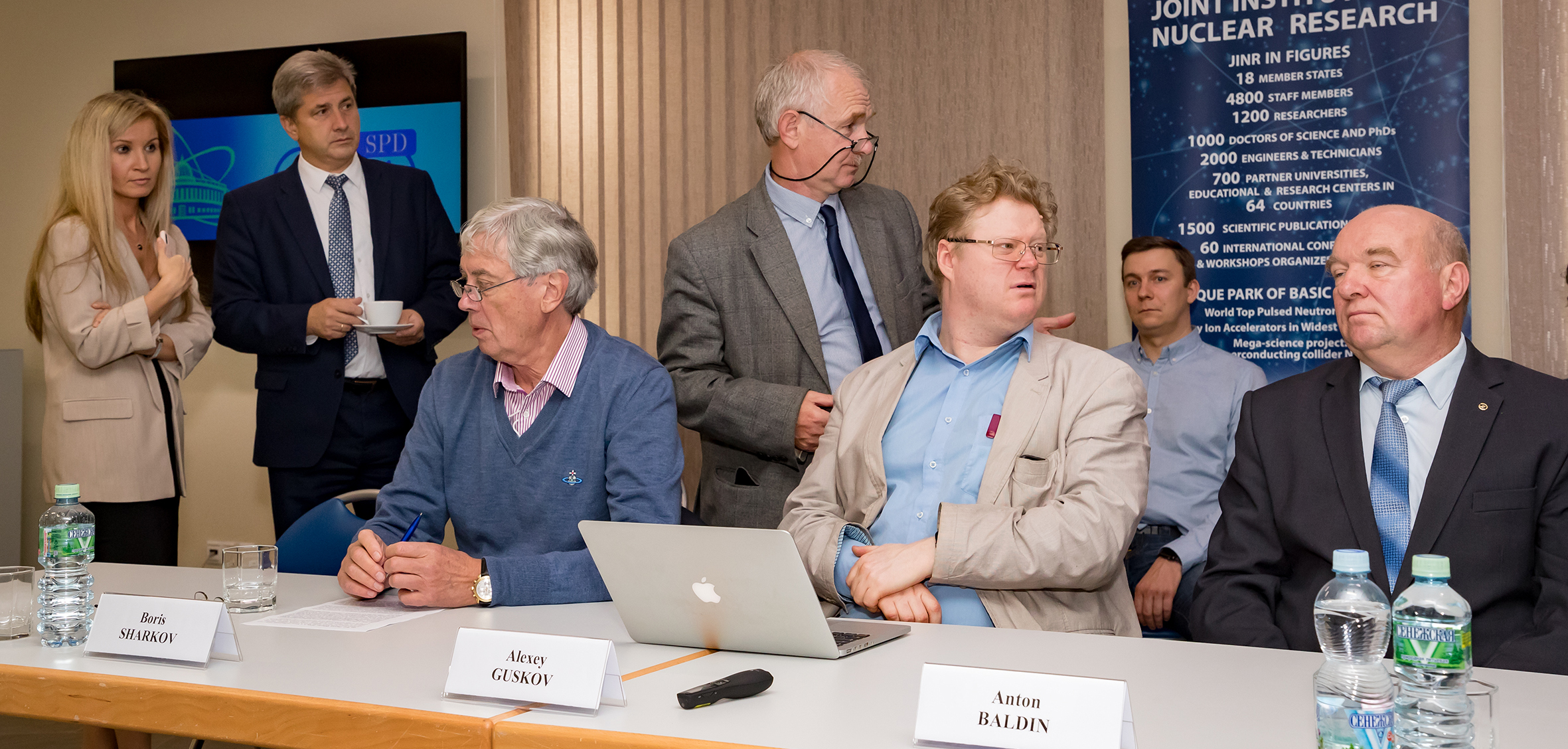First cycle of the “SPD Days in Dubna” meetings started
News, 18 September 2020
On 15 September, “SPD Days in Dubna” started in the Joint Institute for Nuclear Research in a video conference format. The meetings aim to present to a wide world scientific community the project Spin Physics Detector (SPD), the second-largest experimental facility at the NICA complex, as well as to encourage the establishment of international scientific collaboration around the project. On that day, the first event of the cycle, namely International Meeting “NICA SPD experiment at JINR”, took place in a mixed format combining a video conference with personal attendance.
 Participants of the Meeting in the JINR Visit Centre. Photo by Elena Puzynina
Participants of the Meeting in the JINR Visit Centre. Photo by Elena Puzynina
Representatives of scientific centres and universities from Bulgaria, Brazil, Croatia, the Czech Republic, Egypt, France, India, Italy, Poland, Russia, Serbia, Slovakia, and the RSA announced their participation in the meeting. Representatives of government agencies of some countries also took part in the event. Moreover, the format of the meeting provided an opportunity for young scientists to take part in the event as well. In particular, one of the 64 connection points to the video conference was the JINR Information Centre in the South of Russia that gathered a considerable part of young participants.
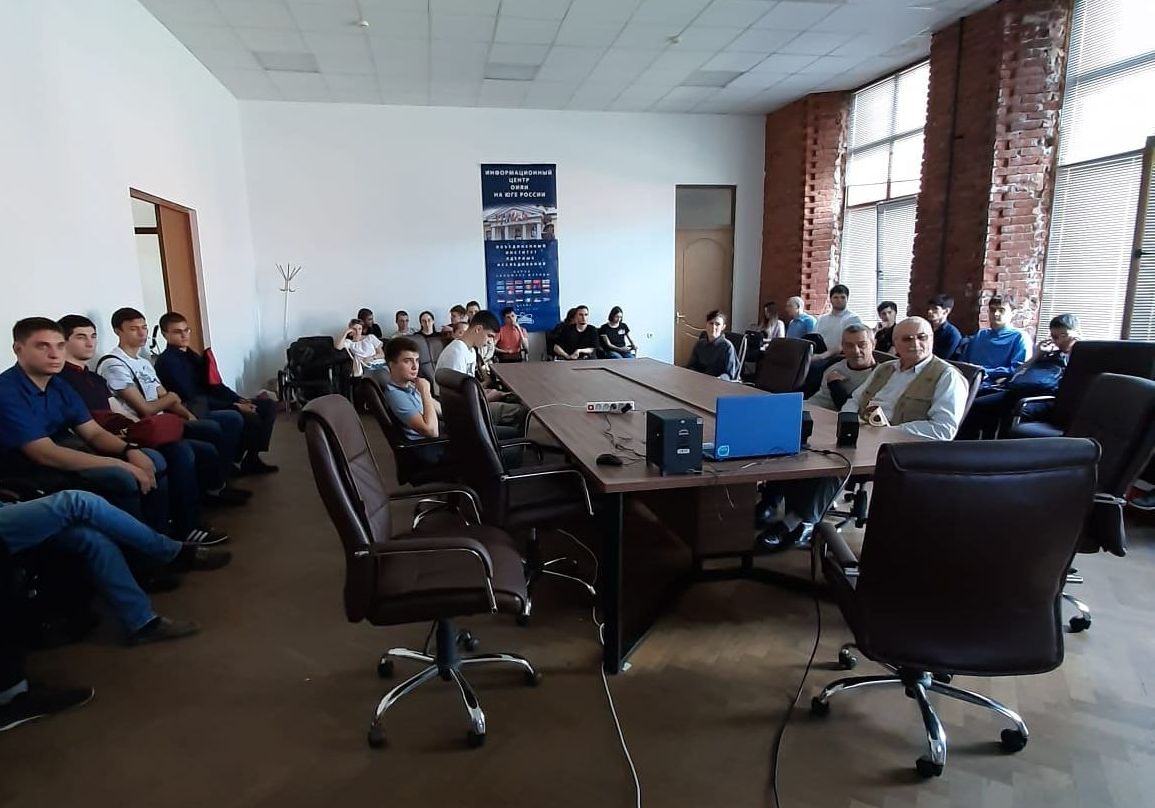 In the JINR Information Centre during the meeting “NICA SPD experiment at JINR”
In the JINR Information Centre during the meeting “NICA SPD experiment at JINR”
JINR Vice-Director Academician Boris Sharkov opened the meeting with a welcoming speech after which leaders of the SPD experiment presented some reports on the project. Head of the project’s working group Alexey Guskov (DLNP) made a report on the general concept of the SPD project and plans for the construction and launch of the physical facility of the experiment. He noted, in particular, that 25 centres from 11 countries already take part in the project, and this number is growing.
Vladimir Ladygin (VBLHEP) presented a detailed description of physical characteristics and subsystems of the SPD detector, as well as major tasks of the physical programme of the experiment. The speaker highlighted that the SPD experiment provides unique (among already existing experimental facilities) opportunity for the study of spin and polarized effects in hadron and electromagnetic processes. The report by Anton Baldin (VBLHEP) presented existing developments on the miniSPD stand, the present state and plans for the construction of the SPD test zone at extracted and secondary beams of the Nuclotron for testing of the detectors and data acquisition systems, as well as for obtaining new results of studies on subtreshold and cumulative region with heavy ions at polarized beams. The construction of the SPD test zone will also allow training young highly qualified staff for the experiment. The final JINR report by Alexey Zhemchugov (DLNP) was devoted to the development of the data acquisition system, the development of software and computing for the SPD experiment.
The general discussion in a round-table format gave impetus to the practical discussion of participation in the project. Vice-President for Culture and Scientific Communication of the Academy of Scientific Research and Technology of Egypt (ASRT) Gina El-Feky opened the discussion and expressed the interest of Egypt to become a participant of the SPD project, as well as announced the intention to launch a corresponding competition on cooperation projects having reminded that the participation of the Arab Republic of Egypt in the NICA mega-project was one of the items in the Roadmap for JINR-Egypt cooperation development signed in December 2018. The interest of Chilean researchers in the participation in the project on the creation of detectors, electronics and heterogeneous computing was expressed by representatives of the Universidad Andrés Bello (UNAB). Andres Lopez from the National Agency of Research and Developments continued presentation of colleagues and raised questions of a formal nature. Bruce Mellado (RSA) from the University of the Witwatersrand, who represented iThembaLABS as well, informed the audience that the development of data acquisition systems and machine learning is the area of potential interest for RSA scientific organizations in the SPD project. An active participant of the CMS experiment at LHC, a VBLHEP senior researcher Ilya Gorbunov made proposals for using capabilities of machine learning. Answering the questions of participants about the involvement of students in participating in the project, Alexey Zhemhugov, being also Deputy Director of the JINR University Centre, suggested using opportunities of the JINR remote scientific and educational platform INTEREST, first of all.
Summing up the milestones of the meeting, Alexey Guskov proposed to continue a more detailed discussion of the scientific component of the project at the next events of the “SPD Days in Dubna”, namely in the frames of remote workshops “Gluon content of proton and deuteron at SPD” (30 September – 1 October) and “Physics programme for the first stage of the NICA SPD experiment” (5 – 6 October). In conclusion, he noted that the meeting was useful, including for its organizers, as far as it allowed them to see more clearly the areas in which potential participants of the scientific cooperation in the SPD project can be interested.
Materials of the reports presented at the meeting are available on the website of the meeting via the link.
